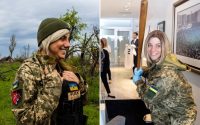Rescuers ready to extract US man trapped in Turkish cave
Rescue crews are waiting for a green light from doctors before they start the lengthy effort to evacuate an New York cave researcher who fell ill more than 3,000 feet underground.
An international team of more than 170 rescuers has set up a complicated medical relay system in Turkey’s third-deepest cave to aid speleologist Mark Dickey, 40. But it still could take a week or more to get him to the surface, depending on how sick he is.
Dickey, of Croton-on-Hudson, New York, fell ill with gastrointestinal bleeding on Sept. 2 while on a mapping expedition in the Morca cave in southern Turkey’s Taurus Mountains.
“The moment we get the go-ahead from the medical team, we will start the evacuation,” said Recep Salci, who heads the search and rescue department at Turkey’s disaster relief agency, AFAD.
Tulga Sener, a doctor and the medical coordinator of the rescue, said the teams assembled small “medical camps” throughout the cave shaft and have set up a “mini laboratory” to monitor Dickey’s condition while he’s taken out of the cavern.
Rescuers predicted that Dickey will need to stop and rest repeatedly as he exits the cave, one of the factors playing into predictions it could take a week or more before he reaches the surface.


How long it actually takes will depend on Dickey’s condition and his strength. The biggest question is whether he will be able to leave the cave on his own two feet, will need some help from others or if he will have to be carried out on a stretcher, according to Salci.
“If he comes up on a stretcher it could last 10 days,” Salci said. “If he is assisted up, then we plan to bring him up in four or five days.”
Dickey had been bleeding and losing fluid from his stomach. Doctors have given the ailing researcher IV fluids and at least four liters of blood, officials said. Rotating teams comprising a doctor and three or four others have been monitoring Dickey.

He has since stopped vomiting and even managed to eat food, according to a New Jersey-based cave rescue group he is affiliated with.
On Thursday, the Turkish government shared a video showing Dickey standing and moving around in the cave.
“The caving world is a really tight-knit group and it’s amazing to see how many people have responded on the surface,” Dickey said in the video.


The European Cave Rescue Association, which described Dickey as a “highly trained caver and a cave rescuer himself,” said Saturday that his medical condition was stable, but that doctors want to check his blood values before beginning the extraction.
The association said Friday that the cave had been divided into seven levels for Dickey’s evacuation, with different rescue teams taking responsibility for each section. Communication in the cave had also been beefed up ahead of the extraction effort, the group said.
Dickey, a veteran instructor with the National Cave Rescue Commission, was co-leading a mapping expedition to find a new passage in the 4,186-feet-deep Morca cave system for the Anatolian Speleology Group Association when he fell ill at a depth of around 3,674 feet.
Dickey thanked the Turkish government for its “quick response” to send him down medical supplies, which “saved” his life.
“I was very close to the edge,” he said.
With Post wires


